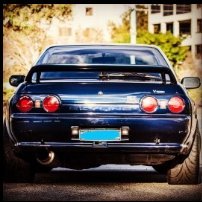Wrecking R32 Gtr / R34 Vspec Ii Engine / Nistune / Tomei / Bilstein / Orc
Announcements
-
Similar Content
-
Latest Posts
-
By Nightmare_mistress_R33 · Posted
Thanks for the update I truly appreciate it. I was trying to figure out the sensors. -
My son recently purchased a 93 Skyline GTS25 (NA), I am hoping to get some insight as to what potential this car has. I have auto mechanical experience, and I am capable of working on this vehicle, but I know nothing about it. Where's the best site to purchase parts (maintenance, repair, upgrades)? What kind of upgrades are available? Thanks again and I look forward to any information that you all have to offer! Darrick
-
By TurboTapin · Posted
This is a pump I have used in the past; no oil ever leaks or gets past the regulator plug.I was trying to understand what caused Nissan to not only mention it in their manuals but to also state it's a replacement part yet the part cannot be found on my pump or on any new pumps and there doesn't seem to have ever been a replacement part#. First time I've noticed something strange like this from NIssan. -
yeah I have brown peeking out from in between some metal sheets close to the hood hinges. Strut towers look fine, even around the edges. some images https://imgur.com/a/brGt3Tu the one that looks the worst is the panel(s) going away right near the firewall on the passenger side, from underneath. Driver side does not look that bad.
-









Recommended Posts
Create an account or sign in to comment
You need to be a member in order to leave a comment
Create an account
Sign up for a new account in our community. It's easy!
Register a new accountSign in
Already have an account? Sign in here.
Sign In Now